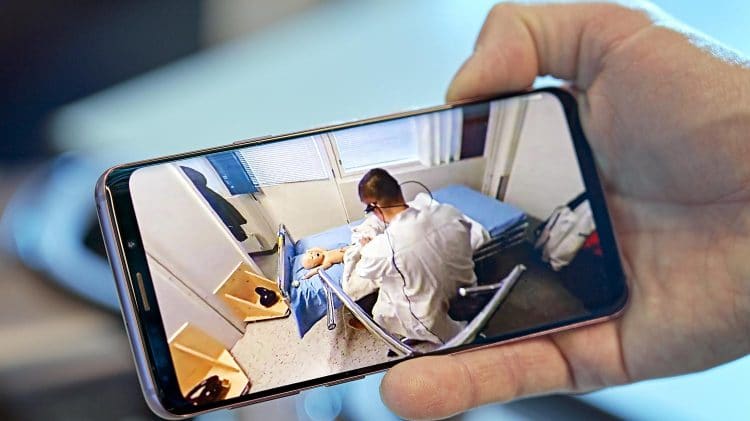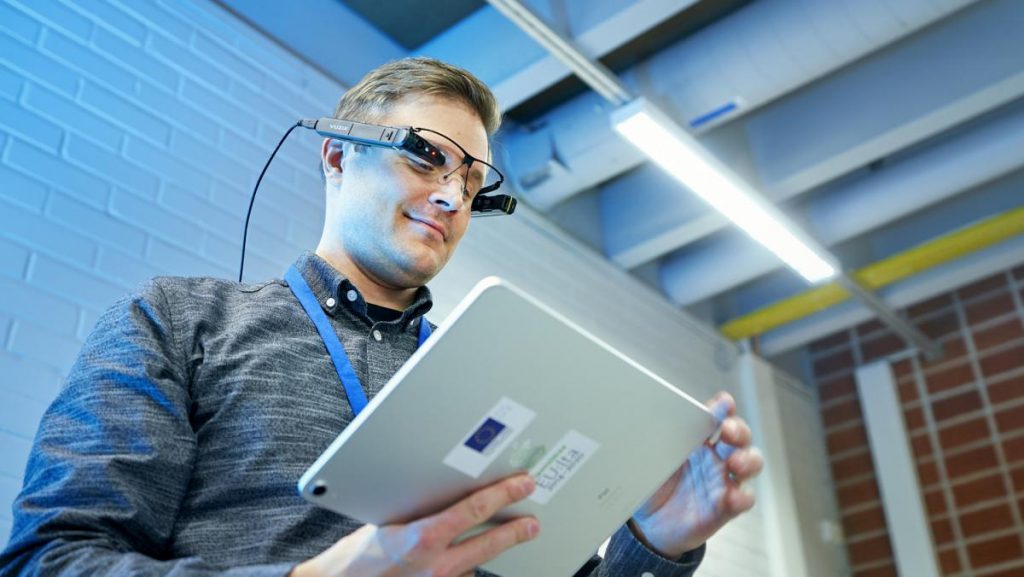
DigiHealth aims for practical applications
Digital health technology is one of the most important research themes at the University of Oulu. The DigiHealth project also takes researchers to the corridors of Oulu University Hospital.
DigiHealth
- One of the profiling areas of the University of Oulu.
- Received four-year profiling funding from the Academy of Finland in May 2019.
- Total project budget is approximately EUR 5 million.
- Recruitment phase being carried out in autumn 2019. International applications include a number of professors. Total number of researchers involved in DigiHealth will probably exceed one hundred.
- Participating in DigiHealth are the Faculty of Biochemistry and Molecular Medicine, the Faculty of Medicine, the Faculty of Information and Electrical Engineering and the University of Oulu School of Economics.
- Research activities are concentrated in Kontinkangas and Linnanmaa. In addition to the university and OUH, Oamk will also participate in DigiHealth in some way, such as through providing teaching.
A view of the operating room opens in front of your eyes. The surgeon is bent over the child patient. The patient’s heart rate, blood pressure and other important measurements appear in the air next to the operating table. You gaze around the room.
The image provided by the VR glasses is astonishingly realistic. It comes, however, from a 360 degree camera. The virtual display connected to the image provides the desired information.
‘There are two purposes for this,’ says Doctor of Technology Ville Niemelä. ‘A remote consultant can see what’s happening in real time, even from the other side of the world. And rather than having to squeeze into the operating room, students can follow the operation from the lecture room.’
The viewers can, for example, read the displays of the devices in the operating room. The operation can also be followed by a physician. This is done by a small camera on the surgeon’s eyeglasses. The glasses themselves are augmented reality glasses; the surgeon can see important measurement values along the top of the lenses.
Of course, surgery is not the only application. ‘VR glasses could, for example, be used to follow a nurse’s home visit. A consulting doctor could connect online to ten different nurses.’
The ‘real-time operating room demo’ presented by Niemelä consists of devices available on the market, but they have not yet been used in this way in the medical field (the operating room is staged and the patient is a manikin). One reason for this is that the full functionality of the equipment requires 5G data transfer capacity. The 5G network is currently on its way, and the purpose of the operating room demo is to illustrate its potential for use in health care.

5G testing in Oulu University Hospital
5G, and the even more powerful 6G, are among the most important research themes of the University of Oulu. Their integration with health technology took a leap forward in May, when the Academy of Finland granted funding to the University of Oulu’s Digital Health profiling area. The DigiHealth project, that is now being launched with the funding received, is a huge project that focuses on digital solutions for future health care.
‘The aim is to obtain practical applications and to make them part of the treatment path,’ says DigiHealth Director and Professor of Medical Engineering Simo Saarakkala. ‘But basic research is also important in an academy-funded project.’
DigiHealth is divided into four main areas, one of which is healthcare wireless systems – in practice this means different kinds of 5G and 6G applications. The Oulu University Hospital test laboratory already has a 5G test network and the operating room demo was set out there.
The agenda includes wireless navigation of patient data and measurements in the hospital environment.
‘Wireless healthcare applications already exist, but the challenge is that they cannot be used for real-time analysis,’ says Saarakkala. ‘In contrast, the data transfer capacity of 5G and 6G is large enough to allow real-time analysis of measurements from several sensors’.
One of the promises of 5G is that different types of sensors will come within the scope of mass wireless data transfer. This takes us into another of DigiHealth’s main areas: biosensors and bioinformatics.
For example, the research group of Professor of Development Biology Seppo Vainio works with the former, and is currently developing sweat biosensors. Sweat contains exosomes – small nano-sized ‘postal packages’ produced by cells which contain information about the state of the body. The enticing dream is to develop personal biosensors that can measure a person’s health condition.
Machines will not replace people
The increase in the number of sensors will produce more digital measurement data. It is also available from biobanks and cohort data, of which there are plenty available in Oulu. The task of bioinformatics is to analyse this huge amount of data in order to obtain new knowledge.
‘For example, a blood test set can have dozens or even hundreds of different values. How do these relate to different illnesses, both in combination and separately? Or what are the connections between old cohort measurements and new ones? Computational methods and bioinformatics researchers are needed to understand these issues.`
Of course, it would be most convenient if the machine gave the answers. Enter, therefore, the third main area of DigiHealth: medical artificial intelligence.
‘We focus on decision-making systems that help doctors and healthcare professionals make diagnoses and treatment decisions. One example is the reading of radiographic images: nowadays the physician analyses them, but artificial intelligence could at least perform a preliminary analysis and indicate areas that require further inspection.`
It won’t be so long until people can outsource the responsibility to artificial intelligence. An example of current cutting-edge technology is an application that the University of Oulu is involved in developing which looks for retinopathy in images of the fundus of the eye. The accuracy of the application is sufficient to identify fundi of the eye that do not require treatment, but a doctor is required to analyse the others.
Making the voice of users heard
In practice, the above-mentioned research areas all overlap. For example, a live operating room view could be combined with biosensors and artificial intelligence that report the surgeon’s alertness levels during an operation lasting many hours.
In fact, DigiHealth is a multidisciplinary project that stretches from biochemistry to electrical engineering and economics. This surprising field of science relates to the fourth main area: assessing the usability and benefits of digital technologies. The perspective is both commercial and user-centred.
‘Which innovations are viable? Or how is the hospital’s digital decision-making system experienced and how does it save time and costs?’ Saarakkala asks. ‘Such questions can be investigated both through health economics and questionnaires, so that we don’t first spend years developing an app and then wonder why no one wants to use it.’
In this context, Oulu University Hospital has a strong role in DigiHealth. The objective is that all recruited researchers would also work to some extent in the hospital – if not in patient work then perhaps in network development work together with the IT department.
‘This will address practical situations and challenges. For example, the decision-making systems should be tested out in real working situations,’ says Professor Saarakkala. ‘We welcome all ideas and views about what kind of digital applications are needed in healthcare.’
DigiHealth brings different parties together
Universities have an obligation to profile themselves; the aim of this is to raise the level of research. The Profi 5 funding received by DigiHealth will strengthen the research of the University of Oulu in the profiling area of digital health technologies.
‘We have never had such a large overall project as this,’ says Simo Saarakkala. Up until now, actors and sub-projects have been scattered. DigiHealth is the first project that aims to bring them all together.’
Research into health technology goes back a long way at Oulu, as does the cooperation between the University, OUH and technology companies. One of the earliest examples is the Polar Electron heart rate monitor, which was developed from the late 1970s onwards in cooperation between researchers, electronics designers and doctors.
Today, the University of Oulu develops technology such as biosensors, artificial intelligence, physiological signal analysis and 5G and 6G technology, all of which are essential in health technologies. Saarakkala is pleased with the evaluation of the Profi 5 International Expert Panel.
‘The University of Oulu was put in third place, after the University of Helsinki and Aalto University.’
Text: Jarno Mällinen
Photos: Mikko Törmänen